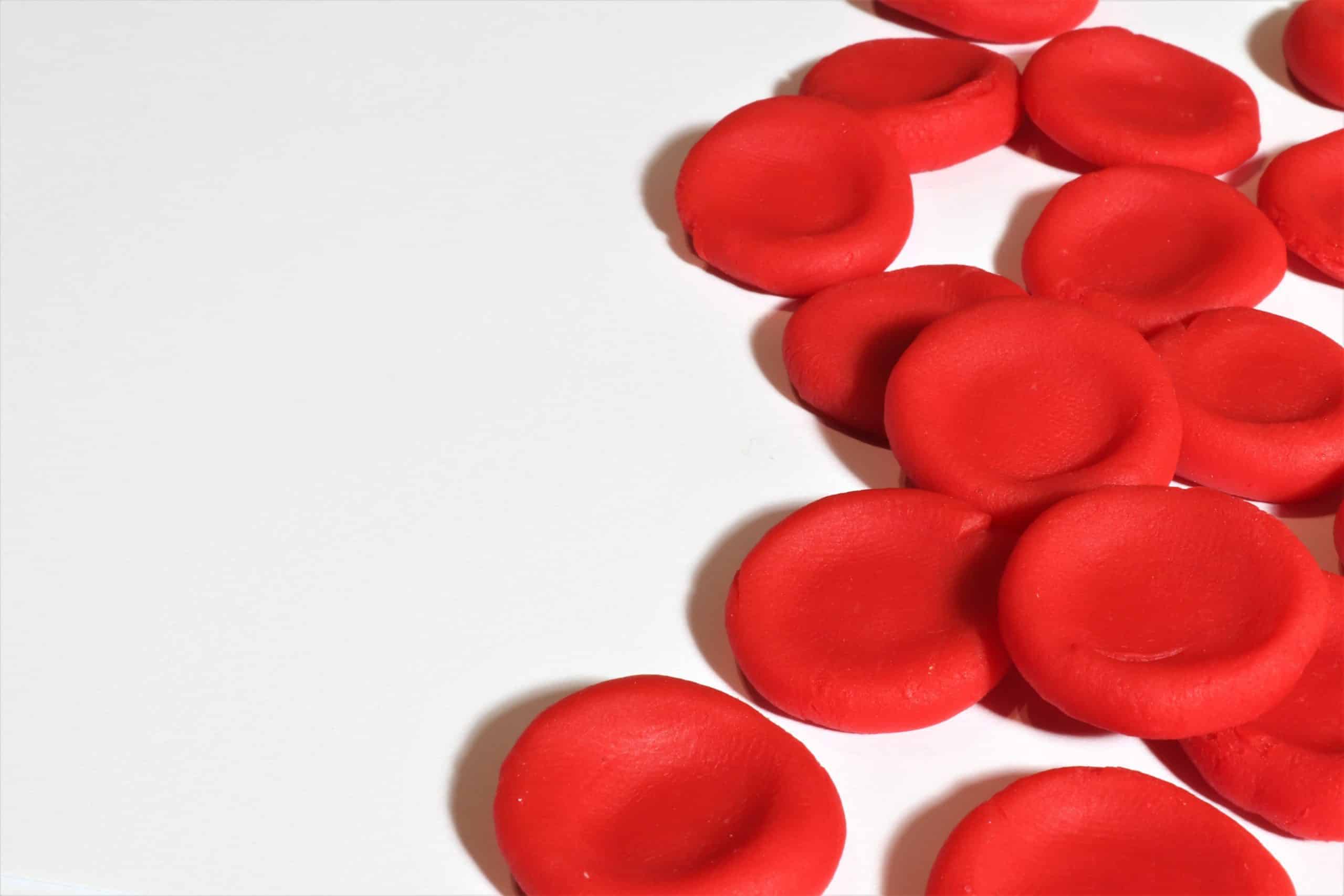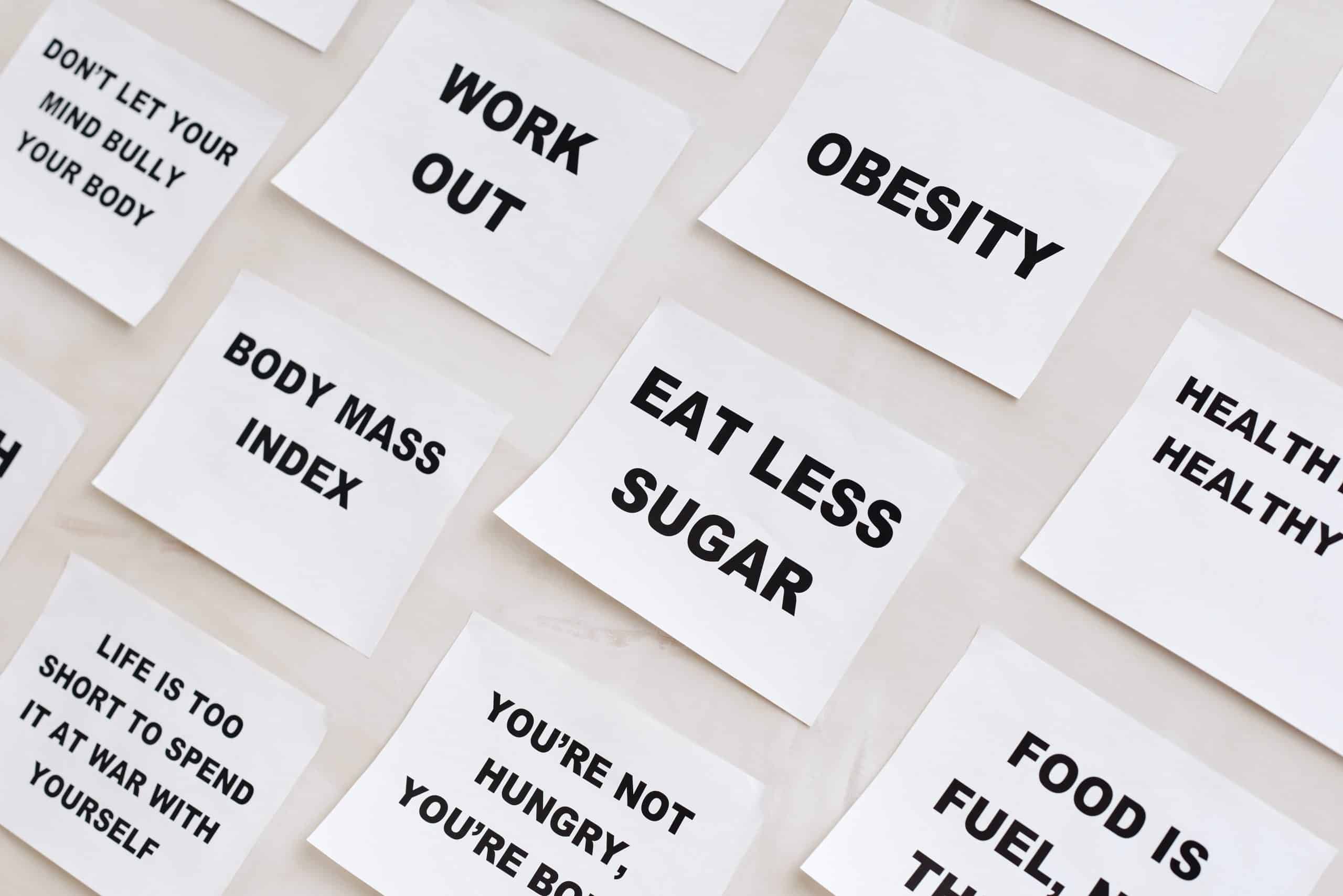Your cart is currently empty!
Category: Health and Wellness
-

Treat Allergies and Asthma Safely and Naturally
Over-the-counter and prescription medications may provide temporary relief from allergy symptoms but are not deeply effective or provide a lasting solution. Immunotherapy boosts the body’s natural defenses using safe and natural low-dose serum to restore the body’s innate immune function.

What Causes Allergies?
Allergies occur when a plant or animal protein or synthetic substance comes in contact with a mucous membrane. Your immune system responds by trying to eliminate the irritant by creating an antibody which is designed to weigh down and fight antigens. When a person is repeatedly exposed to histamine-rich substances, such as highly processed foods, milk, wheat, soy, nuts and shellfish, the immune system can become overwhelmed leading to symptoms such as seasonal and chronic allergies, skin problems, swelling, gastrointestinal issues and asthma.
Identify and Treat Allergies Naturally
A simple skin prick test diagnoses allergies using food and airborne antigens. During the test, allergens are placed on the forearm or back and gently scratched into the uppermost layer of the skin. Positive allergens cause an immune IgE (immunoglobulin E) response. Test results typically appear within 30 minutes.
Once allergens are identified, your healthcare provider will review the results and any necessary treatment plan(s) with you, which may include immunotherapy. Immunotherapy is a cost-effective and convenient treatment that often leads to lasting relief of allergy symptoms even after treatment has stopped. Low-dose prescriptive serums are made with allergens that are taken daily to improve immunity to the positive antigens. Immunotherapy has been clinically shown to improve:
Allergies Rhinitis - Asthma
- Recurrent Colds
- IBS
- Gastritis
- Colitis
- GERD
- Acid Reflux
- Conjunctivitis
- Nasal Polyps
- Chronic Cough
- Autoimmune Conditions
- Skin Rashes
- Dermatitis
- Angioedema
- Chronic Fatigue
- Migraines
- Headaches
- Joint and Muscle Aches
At TriVita Clinic of Integrative Medicine, we offer food and environmental sensitivity testing for 100 different substances. In addition to food and airborne sensitivity testing, we also provide additional laboratory testing to determine if there are other underlying causes of an autoimmune condition. Treatment options vary based on the individual with many natural options designed to improve the immune system and significantly reduce or stop allergies and other autoimmune conditions.
Schedule an appointment with one of our medical providers today to discuss your options by calling 480-337-4148. To learn more, visit TriVitaClinic.comAbout Paul Bernitt
Paul is a passionate advocate for early detection, prevention and wellness and brings extensive healthcare education, experience and leadership to his role as the Director of TriVita Clinic of Integrative Medicine.
-

Free Yourself from the Stress Cycle
Your mental health affects every aspect of your life, from your relationships, productivity, and self-esteem. But there’s a strong link between your mood, mental health, and your physical health, as well. There are many ways to keep your body, mind, and mood in optimal condition. Learning to manage stress effectively makes for productive days and a healthier mind.
How Stress Affects Your Brain
During times of stress, it’s not uncommon to feel forgetful or disorganized. When you’re under a lot of duress, your brain can begin to change how it processes information, which can affect your memory and other cognitive functions.
Your brain is made up of different parts that each performs various tasks. Research suggests that when one part of the brain is engaged, other parts may not have as much energy to perform their tasks as effectively as usual. This may explain why some experience forgetfulness or lapses in memory during extreme stress or trauma.
Chronic stress and anxiety can be extremely harmful to brain health. Persistently elevated levels of cortisol, a stress hormone, can physically change parts of your brain. These long-term changes can result in problems executing certain cognitive functions such as learning and recalling information, short term memory, word finding, and attention and focus.
How Stress Affects Your Mood
Not only does stress negatively alter your brain’s circuitry, but it can also lead to certain mood disturbances such as depression, anxiety, and mood swings. When you experience acute stress, your body releases hormones—including cortisol and norepinephrine—which impairs the function of the prefrontal cortex (home of higher-level thinking). When this happens, your reactive tendencies are heightened, and reflective tendencies are muted.
When you are stressed, you may experience emotional changes. These can include feeling anxious, fearful, angry, sad, or frustrated. If persistent, these feelings can manifest in physical symptoms that perpetuate the cycle. Along with the changes to mood, changes in behavior are also very common. Feeling withdrawn, indecisive, or aggressive can accompany chronic stress.
Improve Your Mood and
Mind There are three major types of stress: routine, sudden, and traumatic. Routine stress is related to the pressures of daily life. For example, meeting deadlines at work, caring for family members, and other daily responsibilities. Sudden stress is brought on by an unexpected negative change such as an illness, divorce or loss of employment. Finally, traumatic stress is experienced
in significant events like a major accident, or natural disaster.The effects of stress can build up over time, which can, in turn, cause more stress. So, taking practical steps to manage your stress is an important first step. Here are a few ways to help reduce stress and improve your mental and physical health:
- Learn to recognize when you’re feeling stressed. Notice changes in thoughts or feelings, muscle tension, difficulty sleeping, etc. These are all signs that you may feel overwhelmed and need to take action.
- Exercise regularly. Routine physical activity—as little as 30 minutes a day—can help regulate stress hormones, boost energy, and improve your mood.
- Be mindful. Mindfulness in the form of meditation, prayer, deep breathing, or journaling can be practiced anywhere and are useful in managing stress.
- Don’t be afraid to get help. During times of stress, it can be helpful to talk it through with a close family member or friend. If you experience feelings of anxiety, depression or feel you can’t cope with stress talk to your doctor right away.
Everyone experiences stress. It’s a natural fact of life; however, learning to deal with stress healthily can make a dramatic difference in your mental and physical well-being.
-

Brain Aging—What’s Normal and What’s Not
With age, some amount of memory loss is considered normal. A lost wallet or forgetting where the car is parked isn’t an immediate cause for concern. As people get older, changes occur in the body (including the brain), which can result in occasional forgetfulness. Some people may also notice it takes longer to learn new things or have difficulty recalling information as quickly as they used to. This can begin as early as the 20s and 30s for some people.
What’s Normal
For most people, occasional lapses in memory are moderate and are not disabling. The following examples are typical for older adults:
- Sometimes forgetting what word to use
- Losing things occasionally
- Forgetting an appointment or bill from time to time
- Becoming easily distracted
- Not entirely being able to remember information that’s “on the tip of your tongue”
What’s Not Normal
The main difference between age-associated memory loss and more severe forms, such as mild cognitive impairment or dementia, is how it affects your daily life. Age-related lapses in memory or thinking have little impact on your performance and ability to enjoy life. On the other hand, mild cognitive impairment and dementias are persistent, debilitating and are marked by a decline in two or more intellectual abilities like memory, language, abstract thinking, and judgment.
Below are examples of potential signs and symptoms:
- Trouble holding a conversation
- Difficulty recalling details of recent conversation or events
- Frequently forgetting dates or events
- Difficulty recognizing or remembering the names of family members and close friends
- Trouble making decision or poor judgment
- Unable to follow directors or feeling lost and disoriented in familiar places
- Difficulty performing simple tasks (paying bills, dressing appropriately or household chores)
When to Get Help
It’s time to see your doctor when memory lapses or difficulty thinking becomes frequent and noticeable. If family members, friends or co-workers have expressed concern, it’s important to speak with your physician as soon as possible for an assessment.
Keep in mind that memory loss can be exacerbated by certain medical conditions, such as head injury, nutritional deficiencies, stress, and depression, or can be a side effect of medications. If you experience memory loss or other issues thinking, it’s important to speak with your doctor to determine what’s causing them.
Check out Alfred Libby’s original, patented formula for brain health. They’re only available from TriVita.

Daily, consistent use of [TVBLOGCOPY]Alfred Libby’s Slow Dissolve B-12[/TVBLOGCOPY][MWSBLOGCOPY]Alfred Libby’s Slow Dissolve B-12[/MWSBLOGCOPY] delivers 100% of the recommended daily requirements for B12, B6 and B9 vitamins.
Also, check out other TriVita supplements for brain health like [TVBLOGCOPY]NeuroShine[/TVBLOGCOPY][MWSBLOGCOPY]NeuroShine[/MWSBLOGCOPY] (U.S. only) and [TVBLOGCOPY]Omega3 Prime[/TVBLOGCOPY][MWSBLOGCOPY]Omega3 Prime[/MWSBLOGCOPY].
[TVBLOGCOPY]If you have any questions, feel free to call us at 1-800-991-7166 in the U.S. or 1-800-344-8797 in Canada.[/TVBLOGCOPY]Reference: https://www.nia.nih.gov/health/memory-and-thinking-whats-normal-and-whats-not
-

Why Is Brain Health So Important to Your Well-being?
The importance of heart health is widely acknowledged and promoted. Everyone knows it’s essential to maintain healthy body weight. So why is it that too few people actively pursue better cognitive health? Brain health is critical to maintaining a healthy and independent life.
Throughout your life, your brain changes and adapts to the many different things you experience and learn. When your brain is healthy, broken connections can be repaired and new ones created. But with age and poor lifestyle, the brain’s natural capabilities can begin to decrease. Many aging adults fear this decline in cognitive function, but it isn’t inevitable.
What are
cognitive skills and abilities?Cognition has to do with how a person perceives, understands, and performs in the world around them. It’s the set of mental abilities and processes that are performed in nearly every action while awake. These include thinking, knowing, remembering, judging and problem-solving. These are higher-level functions of the brain and encompass language, imagination, perception, and planning.
Cognitive skills are brain-based functions needed to carry out any task—from the simplest to the most complex. Your cognitive functioning has less to do with intellectual knowledge and more to do with how you learn, remember, and problem solve.
For example, answering the door involves perception (hearing the doorbell), decision making (deciding whether or not to open the door), motor skills (turning the handle and opening the door), language skills (speaking and understanding language), and social skills (interpreting tone of voice and interacting with another person appropriately).
What happens when cognitive skills decline?
Like most ailments, cognitive disorders are caused by a variety of factors. These can include genetic predispositions, certain medical conditions, lifestyle, and environmental factors. Neurophysiological changes an also result from over-consumption of certain substances like drugs or alcohol, or as the result of physical trauma or injury. A combination of these factors can result in varying degrees of cognitive dysfunction.
Symptoms of cognitive dysfunction can vary widely, but many common signs include:
- Confusion
- Poor motor coordination
- Loss of short-term or long-term memory
- Impaired judgment
- Identity confusion
With age, some brain functions tend to decline. This is usually seen with executive functions—abilities that enable goal-oriented behavior like planning. However, cognitive skills aren’t fixed—they can be improved and strengthened through lifestyle and training.
-

Why Self-Talk Matters
Sometimes a message is so profound few words are necessary. This March blog post is one of those messages.
I recently came across Shad Helmstetter, Ph.D. and his updated book What to Say When You Talk to Your Self. What a simple but insightful reading with the backing of neuroscience to support his message. We all do it…we talk to ourselves. Right?
The new science relates the brain to a computer. Self-talk and thoughts are the keyboards entering our words and the brain stores what you say or allow others to say about you. About this Shad writes, “It is no longer a success theory, it is a simple but powerful fact. Neither luck nor desire has the slightest thing to do with it. It makes no difference in whether we believe it or not. The brain simply believes what you tell it most. And what you tell it most about you, it will create. It has no choice.” I have not been around too many people who are in love with themselves according to how they talk to themselves—and you know what I am talking about.
If the brain registers what we tell it most as the dominant influence in our lives, I would like to offer some thoughts from another favorite book, the Bible, that says, “Whatsoever a person thinks, so they become.”
To keep this simple and profound, here are other the wonderful words from the scripture to repeat over and over to program your brain to bring about positive things in your life. “Friend, I pray you may prosper in all things and be in health just as your soul prospers.” 3 John 2. That is what God desires for you! Say it and think it continually.
I can’t think of a more powerful statement to reflect on and program into your brain. Even if the circumstances of your life do not represent that today, your brain will receive, believe, and will seek to manifest into your life.
TriVita Members, be watching for the VitaJournal in March. It is loaded with positive and meaningful messages from authors like Gil Mertz on forgiveness and Andi Baxter on the breakthrough in how physical exercise supports your health. March is your month to spring forward in wellness!
-

Stroke Warning Signs You Can’t Ignore
Recognizing the signs of stroke and promptly receiving treatment will significantly reduce the damage caused and improve chances of survival.
According to the Centers for Disease Control and Prevention (CDC) and Health Link BC, stroke is the leading cause of severe long-term disability in the United States and Canada. More than half of stroke survivors age 65 and older experience reduced mobility. But strokes can occur at any age. In 2009, 34 percent of people hospitalized for stroke were under 65 years of age.
Six Signs of a Stroke
Timely treatment can reduce the risk of disability and death from stroke. It’s important to know the signs and symptoms so you can act quickly. Here are the top six signs and symptoms to look for:
1. Dizziness, sudden trouble walking, loss of coordination or balance
2. Sudden weakness or numbness on one side of the body, including the face
3. Sudden severe headache with no known cause
4. Difficulty speaking or understanding others
5. Sudden loss of vision in one or both eyes
6. Sudden disorientation, memory loss or confusion

What Causes Strokes
A stroke, also known as cerebrovascular accident or brain attack, occurs when the blood supply to the brain is cut off depriving it of oxygen or when a blood vessel in the brain ruptures. Regardless of the cause, tissue in the brain is damaged or dies. Strokes can lead to long-term disability, permanent brain damage or death.
There are two types of stroke:
Ischemic stroke occurs when the blood supply to part of the brain is blocked by blood clots or as a result of atherosclerosis, a build-up of fats, cholesterol and other particles in and on artery walls. Inflammation, infections and certain medications can also contribute to ischemic strokes. These are the most common type, accounting for approximately 80 percent of all strokes
. Hemorrhagic stroke occurs when a blood vessel in the brain bursts thus preventing normal blood flow and resulting in bleeding within the brain. Hypertension can contribute to this type of stroke due to the increased pressure on arterial walls. Hemorrhagic strokes comprise the remaining 20 percent of stroke cases.
Lifestyle Changes You Can Make Today
The most important risk factors for stroke are preventable and treatable. You can control the top preventable risk factors by working with your healthcare provider to make the following lifestyle changes:
- Control high blood pressure (hypertension) through lifestyle modification or medication when necessary,
- If you smoke – quit! This can add years to your life and reduce your risk of developing many preventable diseases,
- Manage diabetes through lifestyle choices such as eating a healthy diet, exercising regularly and limiting alcohol consumption,
- Control your cholesterol,
- Get adequate physical activity throughout the day,
- Maintain a healthy weight
-

Six Ways to Love Your Heart
The health of your heart is something everyone should be concerned with. Heart disease is the leading cause of death among men and women in the United States. Fortunately, you have the power to control many of the top risk factors associated with cardiovascular disease. Here are six simple ways you can show this workhorse organ a little extra love and minimize your risk of heart disease, heart attack and stroke.
1. Butt Out
If you smoke or use other tobacco products, it’s time to kick the habit to the curb. Smoking cigarettes is linked to a number of chronic diseases and potentially fatal problems like cancer, heart disease
and lung disease.2. Take it Easy
Chronic stress can contribute to high blood pressure and other cardiovascular events such as heart attack. Learn to manage your stress and cope with emotions such as anger or anxiety in positive ways. Stress-reducing activities could include participating in regular physical activity, meditation or prayer, speaking with a qualified mental health provider or connecting with others through community or religious support systems.
3. Hit Snooze
Getting the right amount of sleep each night is critical to feeling your best and protecting your health. Studies show that on average people are getting only 6.5 hours of sleep each night. Furthermore, research is revealing links between sleep deprivation and hypertension, coronary heart disease and diabetes.

4. Take a Stand
Studies suggest that sitting for too long is bad for you no matter how much exercise you do. Sitting for too long can increase your risk of developing blood clots among other adverse effects like poor posture, pain, and lower energy. If you have a sedentary job or sit for long periods, set an alarm or reminder to stand and move around at least once every hour.
5. Go Nuts
Instead of reaching for crackers or chips, grab a handful of nuts. Walnuts, peanuts and almonds are good for your heart and will satisfy your craving for a crunchy snack.
6. Give Thanks
A positive attitude and daily gratitude are good for your soul as well as your heart. Expressing gratitude daily can ward off stress, anxiety and high levels of inflammation which in turn may lower your risk of developing cardiovascular disease.
-

Cholesterol Basics + Five Foods to Improve Your Numbers
Cholesterol can be confusing. What’s good? What’s bad? How can I improve my numbers? These might be questions you’ve asked yourself. Caring about your cholesterol and the general health of your heart is an important first step.
Cholesterol is a waxy, fat-like substance that is found within every cell of your body. Cholesterol can come from two sources; your liver – which makes all the cholesterol you need – and from foods derived from animals. As the amount of cholesterol circulating your blood increases, so can your risks of heart disease. For this reason, it’s important to make annual physicals with your physician a priority.
Cholesterol Basics
There are three types of fatty substances (lipids) in the blood: low-density lipoprotein (LDL), high-density lipoprotein (HDL) and triglycerides.
Low-density lipoprotein (LDL) cholesterol — LDL cholesterol sticks to the walls of your arteries which contribute to the formation of plaque. Plaque is a hard, thick deposit that can clog arteries and make them less flexible. LDL is considered “bad” cholesterol, and lower levels are better for your heart.
High-density lipoprotein (HDL) cholesterol — HDL is known as “good” cholesterol because it helps remove LDL from your arteries and moves it to the liver for removal. Higher levels of HDL are considered good for your heart while low levels have been shown to increase the risk of heart disease
. Triglycerides — Triglycerides are the most common type of fat in the body and store excess energy from your diet. High triglycerides combined with high LDL (“bad” cholesterol) and low HDL (“good” cholesterol) can increase the risk of atherosclerosis (hardening and narrowing of arteries), heart disease and stroke.
Controlling Your Risk Factors
Cholesterol is one of the major controllable factors for heart disease, heart attack, and stroke. According to the CDC, nearly half of Americans have at least one of the three key risk factors for heart disease: high blood pressure, high cholesterol, and smoking. Other risk factors for heart disease, heart attack, and stroke include diabetes, unhealthy diet, sedentary lifestyle, obesity, alcohol consumption, and family history.
You can control these factors through your lifestyle choices. Even simple changes to your day-to-day routines can have a profound impact on your heart health.

Five Foods to Improve Your Heart Health
1. Wild-Caught Fatty Fish
Fatty fish have high levels of [TVBLOGCOPY]omega-3[/TVBLOGCOPY][MWSBLOGCOPY]omega-3[/MWSBLOGCOPY] fatty acids, which can help support heart health. The American Heart Association suggests that you aim for two serving of oily fish per week. Good options include salmon, tuna, trout, mackerel, and sardines.
2. Nuts
Walnuts, almonds and other nuts can help improve cholesterol and lower your risk of developing other chronic diseases. Nuts tend to be high in calories, so a handful a day of raw or unsalted nuts is enough.
3. Soluble Fiber
Oatmeal, whole grains, fruits, and vegetables contain soluble fiber which can lessen the absorption of cholesterol into your bloodstream and reduce LDL cholesterol. Soluble fiber is also found in kidney beans, Brussels sprout, and fruits such as apples and pears.
4. Olive Oil
Substituting unhealthy oils such as canola or corn oil with olive oil can have heart-healthy benefits. Olive oil contains monounsaturated fatty acids (MUFAs) which are considered a healthy dietary fat. Olive oil is also loaded with beneficial antioxidants.
5. Avocados
Avocados are also a good source of healthy fats, antioxidants, Vitamins C, E, K and B vitamins like B5, B6 and folic acid. Avocados also offer minerals, cholesterol- reducing phytosterols and dietary fiber.
-

The Heart of the Matter
Some interesting facts about our Circulatory System
The human body’s circulatory system consists of three independent systems that work together—these include the heart (cardiovascular), arteries, veins, coronary and portal vessels (systemic) and lungs (pulmonary). The circulatory system uses its massive network of veins and arteries to transport blood, oxygen and other nutrients to and from the cells in our body.
Make a fist
Want to estimate the size of your heart? Adults, clench your two fists together for an idea of the size; as for weight, this relentless pumping machine (it pumps 4,000 gallons of blood each day), weighs in at around 11 ounces.

Eye feel left out
Your heart provides nourishing blood to nearly all tissues in the body—except the corneas. Because transparency is required to properly refract light, the corneas contain no blood vessels, instead getting their nourishment from fluids in the chambers behind them.
Around the globe—2.5 times
That’s how far your blood vessels would reach, if laid out end to end in a straight line (60,000 miles). Your blood vessels—consisting of arteries, veins and capillaries—transport blood to and from the heart. The largest, your aorta, is roughly the diameter of a garden hose, while the smallest capillaries would have to team up with 10 of their friends to equal the diameter of a human hair.
Give me a minute
The time it takes for the human body’s roughly five liters of blood to circulate through the body—three times. In one day, your blood travels about 12,000 miles.
A short life, well-lived
A red blood cell—responsible for oxygen delivery and carbon dioxide removal—lives an average 120 days. Red blood cells represent about half of your blood; the rest is made up of plasma, white blood cells,
and platelets.
References:
http://www.nhlbi.nih.gov/health/health-topics/topics/hhw/anatomy
http://www.livescience.com/39925-circulatory-system-facts-surprising.html
https://www.nei.nih.gov/health/cornealdisease
http://learn.fi.edu/learn/heart/index.html
http://www.pbs.org/wgbh/nova/body/map-human-heart.html
http://www.nlm.nih.gov/medlineplus/ency/anatomyvideos/000104.htm -

Nutrition Does Matter!
A recent study on the benefits of fish oil and Vitamin D was released by the Council for Responsible Nutrition. The study results were also published by The New England Journal of Medicine titled The Vitamin D and Omega -3 Trial (VITAL). There are times when specific nutrients deserve our attention. Studies like this one add supporting information to our belief that the body, when given the right nutrients and nurturing, is designed to heal and restore itself.

Without going into the full details of the study, what was impressive is 25,000 people participated in the study. Although top-line results in healthy people were not remarkable, what is striking are the findings below the top-line results in the additional analysis shows:
- Almost a 30 percent reduction in heart attacks in the fish oil group compared to placebo
- A 40 percent reduction of heart attacks in fish oil groups who had less than 1.5 servings. of fish per week with even more dramatic results among African-Americans.
- Reduction in the rate of cancer deaths two or more years later in people who took Vitamin D.

Having owned a research company in the past, I learned that many times it is in the additional findings are often the most interesting. The study affirms the safety of both Vitamin D and omega fatty acids, and does not change the decades of research showing how crucial supplementation is for overall health.
Vitamin D, a nutrient of public health concern, plays an important role in bone health, immune function and maintaining cardiovascular health in adults. Omega-3 is essential to cardiovascular, prenatal and cognitive health.
Also…
I
am thrilled to announce we have just completed our ten-part television series in partnership with TBN. The show is called Wonderful You and will start airing in February. These are informative, inspirational and with a little bit of humor tied in with man-on-the-street interviews. The shows are a new way to educate the public to better understand the body’s systems and organs and how to support them with diet, supplementation and lifestyle activities. This is another way we can fulfill our mission of helping to improve people’s quality of life with greater wellness.
Yes, lifestyle choices do matter.
Nutrition matters and nurturing matters! You can live with greater wellness no matter what age or state of being you are in. We are committed to the mission of helping others experience greater wellness.
Last thing here, if you find New Year’s resolutions are difficult to keep, perhaps a Wellness Coach would help you discover new ways to overcome barriers and live the life you desire. [TVBLOGCOPY]If you think this might be beneficial to you, call 1-800-344-9431 and ask for a free, confidential consultation.[/TVBLOGCOPY] There is a reason all Olympians and every professional who seeks optimal performance relies on a coach! It is a great method to achieve what you desire in life.
Make 2019 your year of optimal wellness!
-

Are “Sneaky” Snacks Keeping You Heavy?
When I was asked to write an article on snacking I was reluctant at first
because this subject is so controversial. Often, studies on snacking have been inconclusive. Should we eat three main meals a day and nothing else? Or three meals plus snacks? Research results are inconclusive. We do know that snacking works for many people in trying to lose and maintain weight. The question is, snacking on what? First, I’d like to recognize the widespread misconception that snacking is a bad habit: it is not. Snacking is very much related to wellness, and wellness is very much related to weight loss. But if you’re snacking on certain “convenient,” processed foods that claim to be “healthy,” you could find yourself stuck at a certain weight—or even gaining weight. This is not your fault.
To understand how “sneaky” snacks might be undermining your weight loss efforts, we need to look at our world, today and yesterday.
Fast lane, fast food
Our Western culture is characterized by fast pace and productivity. Living in this fast lane, it is just part of life to sometimes feel tired, hungry and/or stressed out. And when we feel this way, it is natural to want to eat something as a snack. Even when we are just bored, we often reach for food. The problem? There are pre-packaged, easy-to-eat snacks everywhere, loaded with sugar, salt and/or fat. Some of them even masquerade as “healthy” snacks, luring you with claims of “low-fat,” or “less sugar,” but most are not healthy at all.
How has this happened? It all goes back to the early 1980s, when the U.S. Department of Agriculture (USDA) launched a campaign to reduce fat in the daily diet due to the risk of heart disease. As a result, the recommended percentage of our dietary fat intake decreased, from 40% down to 30%. The food industry, which is a trillion-dollar business, immediately jumped on the low-fat bandwagon. We started to find store aisles packed with items like chips, cheese puffs, ice cream and cupcakes, with labels proclaiming “Low-fat!” or “Reduced fat!”
48 ways to disguise sugar
Despite their “shimmer of health,” these snacks are loaded with sugar. The sugar is simply disguised under many different names, such as high fructose corn syrup, sucrose, fructose, glucose, evaporated cane juice and so on, forming 48 different names for sugar. The food industry does this on purpose
because the federal government requires ingredients to be listed by mass—that is, in order of greatest amount down to least amount. By using a number of different names for sugar, a food manufacturer can list this ingredient further down the list. So, we’re unwittingly eating too much sugar. It’s a key reason why Americans, on average, weigh 25 pounds more now than a generation ago. Yes, processed sugar is a specific metabolic toxin, and it contributes to a range of health problems, including obesity, diabetes, high blood fat and high blood pressure.

Read food labels very carefully
The obvious question is, “What are healthy snacks?” You can probably guess my first answer: fruits and vegetables. But if you do choose a pre-packaged snack, please read the label carefully. If the list of ingredients is too long, chances are the snack is loaded with sugar or salt and other chemicals. As a rule of thumb, a healthier snack has a shorter list of ingredients. If you’re not familiar with an ingredient, look it up: chances are it’s a chemical that you’d be better off without.
Be aware, too, of label ingredients such as enriched wheat flour, soy, corn and certain artificial colors. Enriched wheat flour has some of its grain stripped out and replaced with chemicals, so it’s a processed food. Soy or corn on a label in North America has likely been genetically modified. Artificial colors like Red #40 have been linked with behavioral issues and learning disabilities, which is why these artificial colors have been banned in other countries.
Many chemicals are hidden under fancy acronyms, which mean nothing to most people. For example, butylated hydroxytoluene (BHT) has been associated with cancer and DNA damage. The real reason it is in snack food is to preserve freshness. Aspartame is another artificial sweetener that is already banned in many countries due to its neuro-toxicity (damage to the brain and nervous system), but still widely used in North America.
The lesson in snack foods, as in so many areas, is to be an educated consumer. Don’t fall for ads, labels and packaging that make something appear to be good for you and your waistline—they may be actually disguising a product that’s full of chemicals (some possibly dangerous), and full of calories.
If you’ve been eating “sneaky“ snacks that are keeping you from losing weight, it’s not your fault that you’re not losing pounds, or even watching the scale go up. But now that you know the potential pitfalls of snacking, it’s your responsibility to read those labels carefully.
This article is intended for educational purposes only.

About Jarir Nakouzi, MD
Jarir Nakouzi, M.D., completed his U.S. residency in the Yale University
Program of Internal Medicine. Dr. Nakouzi received his medical degree from La Sapienza University and his degree in homeopathic medicine from Homeopatia Universalis School of Homeopathy, both in Rome, Italy. A cancer specialist, Dr. Nakouzi takes an integrative approach to chronic diseases in his private practice in Connecticut. -

What Story Do You Choose
“I hope my life lessons can benefit you, and lead you to make healthier financial choices, too!”
You may have heard the easiest way to find out what’s important to someone is to check their checkbook. With online banking and many options for electronic payments, I actually only write about ten checks a year. My checkbook only has a very short story to tell! Looking at how I use all my financial resources certainly tells a larger story about me. The details change with time and circumstances, but there is still a common theme in the series of my financial story. First of all, I know God has provided for me, just as He promised in the Bible. Secondly, my decisions on handling what He provides impact my physical, emotional and spiritual well-being.
Have you ever spent money on something and later been very glad you did? Have you ever spent money on something and later regretted that decision? Of
course you have! Our emotions are often tied to our purchases. I’d like to be able to tell you all my financial decisions have been wise, but you know that is not true – for any of us! When you make impulsive purchases, do you get that “what have I just done” sick feeling in the pit of your stomach? How about adding worries about “now what do I do” and “does this purchase honor God” to pile on distress? And all that is because of your choices. Just as we can make choices to support our physical, emotional and spiritual wellness, we can make choices to promote financial well-being.How exactly do we do that? By being thoughtful about our options. In Atul Gawande’s book, Being Mortal—Medicine and What Matters in the End, he explains that perspective matters. He writes about how people of all ages “found living to be a more emotionally satisfying and stable experience” when they recognized life’s fragility. That’s when their focus shifted away from achievement and acquisitions, to everyday pleasures and the people closest to them. Don’t we all want to have an emotionally satisfying life? If keeping our focus on people, on what we already have, and on the fleeting nature of time brings contentment, then let’s make more choices based on that!
It is worth taking your time to think about what is important in the longer view, and then make your financial choice. Such an intentional process is more satisfying and thus a healthier choice. Choose a healthy financial story for yourself!

About Deborah Stec, MBA, CPA
Deborah Stec, MBA CPA is TriVita’s Global Controller. She has been with TriVita over twelve years. Her career has been diverse over the decades, from public accounting in New York City, to internal audit in Alaska, to health care management accounting in Michigan, and wellness financial management with TriVita.
-

Whole Person Approach to Joint Health
The CDC projects that by 2040 nearly 78 million U.S. adults will be diagnosed with some form of arthritis. But arthritis isn’t the only concern; any damage to your joints can lead to loss of mobility, stiffness and discomfort.
The joints in your body are made up of many complex components. These include ligaments, tendons, cartilage and synovial fluid, a lubricant to help reduce friction within the joint. In early adulthood, bones are at their thickest and density begins to decline around age 35. This is a normal process, but the rate of bone loss can be exacerbated due to certain lifestyle factors including injury, weight and stress.
A joint is the meeting place of two bones in the body, and they allow for different types of movement. Joints are why you can swivel your hips while you dance, bend your knees to pick up grandkids and interlock fingers with loved ones. If you struggle, continue reading for a whole person approach to healthier joints.

Physical
Whether or not you experience joint pain and to what degree, has a lot to do with your overall physical health. Maintaining a healthy weight is one of the best things you can do for your joints. Individuals that are overweight tend to experience greater pain and issues in weight-bearing joints such as knees, hips and back due to the excess wear and tear. Research shows that each pound of extra weight exerts approximately four pounds of extra pressure on your knees. Dropping extra pounds will reduce the burden on your hardworking joints and help prevent future injury.
Enjoying regular exercise can help you shed some extra weight and alleviate joint pain. Be sure to choose activities that won’t bother your joints. Low-impact exercises include bicycling, swimming, tai chi and moderate walking. Strength training is also a great option because it builds muscle and keeps your ligaments strong to help support healthy joints.
The key is just to get up and get moving! Sitting on the couch or in a chair for long periods puts you at higher risk for joint pain and stiffness, so it’s important to get up regularly, stretch or go for a short walk.
Emotional
Believe it or not, how you feel mentally has a profound impact on how you feel physically. Emotions such as anxiety, stress
and depression can influence your joint health and increase your discomfort. According to the Arthritis Foundation, individuals with any form of arthritis – including osteoarthritis, rheumatoid arthritis, psoriatic arthritis, lupus goutand fibromyalgia – are more at risk of feeling depressed and anxious, and vice versa. Poor mental and emotional health can actually worsen your pain.Stress is all too common, and it can wreak havoc on every system in your body, including your musculoskeletal system, digestive and immune system and your endocrine system just to name a few. When it comes to joint health, stress activates your sympathetic nervous system (“fight or flight”) which suppresses your repair processes. In times of stress, growth hormone production is altered, and minerals key to bone formation are released into your bloodstream. A hormone called cortisol is also produced by your adrenal gland. Large amounts of cortisol can suppress the body’s normal repair functions and is linked to increased inflammation and inadequate calcium absorption.
Stress is intended to be a temporary survival instinct. However, if you experience stress regularly, your body is never given a chance to return to normal and repair itself. So how can you reduce stress and switch on your body’s parasympathetic nervous system (“rest and digest”)?
One very powerful way to turn on your restorative processes is through meditation. Many people are convinced that they lack the dedication or patience to meditate, but it doesn’t have to be difficult. There are many different types of meditation, and it’s important to find what works best for you. One of the most common techniques is called transcendental meditation. With this technique you don’t need to repeat any mantras or chants; simply concentrate on a specific thought to focus your attention and push away all of the other racing thoughts. Transcendental meditation is meant to help increase your restful alertness and help you achieve a quieter mental state.
But if meditation is new to you, there are many fantastic resources available now to help you [TVBLOGCOPY]calm your mind and relax[/TVBLOGCOPY][MWSBLOGCOPY]calm your mind and relax[/MWSBLOGCOPY] after a stressful day. Finding follow-along meditation and deep breathing videos are as simple as searching YouTube or downloading an app on your phone or tablet.

Spiritual
For some, spirituality is practiced through a specific religion, meditative practice or daily reflective thought and prayer. Regardless of how you express your spirituality, science is showing that there are real health benefits to be experienced.
A study published in the Journal of Behavioral Medicine reported that 20 minutes of spiritual meditation per day can improve a person’s tolerance to pain while decreasing pain and anxiety. In another study, published in the Journal of Health Psychology, researchers looked at
migraine suffers and found that mindfulness reduced pain-related symptoms more than just physical relaxation exercises.While scientists don’t fully understand why spiritual practices are so powerful, it is recognized that spirituality helps you focus on something bigger than yourself. By surrendering yourself to something larger, you release the burden you’ve been carrying with you. Spirituality also helps individuals feel more connected with like-minded people. Being part of a community and building strong relationships can help heal and repair physical and emotional wounds.
Conclusion
Joint pain and stiffness can severely limit your flexibility, mobility
and happiness. This is why it’s important to proactively protect your joints through smart diet, exercise, stress managementand spiritual development. If you already experience joint discomfort or loss of mobility, talk with your physician about the different options available to support your joints and promote whole-body healing. -
Can Supplements Really Reduce Your Inflammation?
The short answer: yes and no. To understand this answer, you first need to know the basics of inflammation and what to really expect from dietary supplements.
What is inflammation?
Before you start working to reduce inflammation levels, you should be familiar with the different types of inflammation and their effects on your body.
Simply put, inflammation is your body’s normal and essential response to any harmful or dangerous stimuli. You need inflammation to survive and thrive! Without inflammation how would your body react to a bee sting or other injury? Those are examples of acute inflammation which is characterized by pain, redness, heat, swelling and possibly loss of function or mobility.
Chronic and systemic inflammation is a little more elusive. People may have low-grade inflammation throughout their bodies and not know it for years. This can be dangerous because low-grade chronic inflammation has been linked to heart disease, type 2 diabetes, rheumatoid arthritis and obesity and neurodegenerative diseases like Alzheimer’s disease. Symptoms of chronic inflammation are easily overlooked or written off as something else. Possible symptoms can include fatigue, fever, rashes or chest and abdominal pain.
Determining Your Risk
Chronic inflammation develops over time and can easily go unnoticed. However, certain risk factors can promote chronic inflammation that you should be aware of. These include age, obesity, diet, tobacco use, hormonal imbalances
and stress levels. In addition, if you are regularly exposed to toxins or irritants, have an autoimmune disorder or untreated acute inflammation you may also experience chronic inflammation. If you suspect that you might have chronic inflammation, visit your physician and request to have your [TVBLOGCOPY]C-reactive protein (CRP) [/TVBLOGCOPY][MWSBLOGCOPY]C-reactive protein (CRP)[/MWSBLOGCOPY] levels checked.If you find that your CRP is elevated or just want to improve your health, there are so many ways you can support your body to perform optimally.

Taking Control of Your Lifestyle
There’s no magic pill or potion for a poor lifestyle. Being genuinely healthy and experiencing wellness requires commitment and adequate time to allow your body to heal. Certain nutrients have been shown to help support healthy inflammation, but they can’t wholly overhaul years of processed foods, sedentary lifestyle and stress on their own.
Supporting a [TVBLOGCOPY]healthy inflammation[/TVBLOGCOPY][MWSBLOGCOPY]healthy inflammation[/MWSBLOGCOPY] response involves every aspect of your lifestyle. Supplements are intended to be used in conjunction with a healthy lifestyle. This involves eating a healthy [TVBLOGCOPY]anti-inflammatory diet[/TVBLOGCOPY][MWSBLOGCOPY]anti-inflammatory diet[/MWSBLOGCOPY], [TVBLOGCOPY]exercising regularly[/TVBLOGCOPY][MWSBLOGCOPY]exercising regularly[/MWSBLOGCOPY], drinking plenty of water, reducing stress and improving your [TVBLOGCOPY]mindset and attitude[/TVBLOGCOPY][MWSBLOGCOPY]mindset and attitude[/MWSBLOGCOPY].
-

How to (Finally) Keep Your New Year’s Resolutions
For many people, the start of the year marks a time of reflection and self-improvement. That’s why more than 40% of Americans make New Year’s resolutions. While resolutions and goal setting are productive ways to set intentions for the coming year, many fail to keep their resolutions for more than just a few months.
Why do so many people fail and how can you make this year different? Below are four strategies to use when setting goals that are sure to help you stick with it and finally succeed.
Start Small
Many New Year’s resolutions are extreme, which can contribute to their inevitable failure. Making broad, sweeping goals can be overwhelming and become discouraging as time goes on. Instead of a life-changing makeover overnight, aim to make small, incremental changes throughout the year. Set small goals or challenges for yourself daily or weekly. Small, sensible goals can feel less daunting, which means you are more likely to achieve them!
Be Specific
When setting goals of any kind, being clear and straightforward is in your best interest. For example, if your goal is to improve your physical fitness and lose weight, it’s crucial to write down exactly how to do that. Instead of resolving to ‘go to the gym more’ try something like: ‘go to the gym two days per week,’ then increase that number over time to build the habit.
Be Accountable
Another pitfall for many is failing to share their resolutions with others and asking for help. Sharing your resolutions with family and friends can help keep you accountable throughout the year. You might also find that others share similar goals. If so, check in with each other regularly, motivate and hold one another accountable.
Check Your Attitude
People often set New Year’s resolutions with the best of intentions. The coming year seems bright and full of opportunity — and it is! Don’t lose the inspiration and excitement that you felt while making your resolutions once the New Year rolls around. Just setting a goal will increase your chances of actually achieving it.
If you slip up throughout the year, get off track or take a day off remember it is okay! It’s estimated that 75% of people slip up on their resolutions within the first two months. Instead of feeling guilty or beating yourself up, acknowledge the misstep and get back on track. You don’t have to wait for tomorrow or Monday or next year. Every moment is a new opportunity to make a positive change in your life.
Remember, by setting New Year’s resolutions you are recognizing that your everyday choices have profound effects on your entire life. Making positive lifestyle changes is important, and reaching your goals, no matter how big or small, requires one step at a time.
-

Look and Feel Better with Essential Amino Acids
Amino acids are the building blocks of protein and play an important role in the health of your entire body, including your integumentary system which involves your largest organ – your skin! Your skin is the first thing people see and can say a lot about your overall health. Essential Amino Acids (EAA) need to be on your list of must-have supplements to support your entire body.
What are Amino Acids?
There are over 20 different amino acids, which are crucial components of human life. Amino acids contribute to many metabolic processes, protein synthesis and play a role –either directly or indirectly– in nearly every bodily function.
Some amino acids can be produced within the body; however, there are nine amino acids that our bodies can’t produce. For that reason, these are referred to as Essential Amino Acids (EAA). These include histidine, isoleucine, leucine, lysine, methionine, phenylalanine, threonine, tryptophan and valine. Each plays a different role in the body and has unique properties essential to your wellness.
It’s important to note that EAAs are not the same as branched-chain amino acids (BCAA). Branched-chain amino acids are a group of three Essential Amino Acids that have a chain that branches to the side. These amino acids are leucine, isoleucine, and valine. So, all BCAAs are EAAs, but not all EAAs are BCAAs. While BCAAs are important for energy production, muscle metabolism, and overall health, they alone are not enough.

How do Essential Amino Acids help your body?
Amino acids are necessary for the process of creating collagen, fibrinogen
and elastin. These are the connective and structural proteins that keep your joints, tendons, ligamentsand skin strong and healthy as you age.Collagen and elastin production begins to slow down around your 20s. If your body doesn’t produce enough elastin and collagen, it can start to take its toll on your joints, cartilage, hair, skin
and nails making you feel and look older than you actually are!In addition, amino acids play a key role in:
- Healthy triglyceride and LDL levels maintenance
- Blood glucose level regulation
- Metabolism regulation
- Blood pressure regulation
- Cardiovascular health
- Liver health
- Neurotransmitter production
- Injury and illness recovery
- Improved muscle protein synthesis
Essential Amino Acid Sources
As explained earlier, nine amino acids are necessary because your body cannot produce them through normal metabolic processes, they must come from your diet or supplementation. Natural sources of these EAAs include meat, fish, eggs
and plant-based proteins. However, relying on protein from your food alone isn’t the most effective means.
In his book, The Building Blocks of Life, renowned amino acid expert and competitive athlete Dr. Robert Wolfe explains that dietary protein is the conventional source of amino acids. However, approximately 30% of Americans over the age of 65 fail to consume the minimum daily recommended intake of protein. Even with adequate consumption, dietary protein alone doesn’t provide the balance of EAAs necessary for optimal health.
While protein still has a place on your plate, supplementation is the best way to ensure you are receiving the right balance of Essential Amino Acids for your goals.
-

5 Ways to Fight Chronic Inflammation
Inflammation is essential to your body’s natural healing process. However, when low-grade inflammation is unmanaged, it can become a serious issue. Unchecked inflammation isn’t always easy to detect. Likewise, it’s difficult to determine what is causing the inflammation. However, lifestyle choices play a significant role in inflammation levels which is why we’ve put together five tips to help you clean up your lifestyle and support healthy inflammation.
Step Away From Sugar
Regularly consuming sugary foods and drinks is linked to chronic inflammation, diabetes, cardiovascular disease and more. Sugar and artificial sweeteners go by many different names, some you may not easily recognize, which is why it’s more important than ever to read labels! But the best way to dramatically reduce your sugar intake is to avoid eating processed and pre-packaged foods.
to chronic inflammation, diabetes, cardiovascular disease and more. Sugar and artificial sweeteners go by many different names, some you may not easily recognize, which is why it’s more important than ever to read labels! But the best way to dramatically reduce your sugar intake is to avoid eating processed and pre-packaged foods.
Fill Up on Good Stuff
If you’ve been living off convenience foods and takeout you are setting the stage for chronic inflammation. But knowing which diet is best isn’t as simple as it should be. The most straightforward answer to “what should I eat” is found in the perimeter of the grocery store. Stick to fresh fruits, vegetables, wild-caught cold water fish like salmon and cod, whole grains and healthy fats. Limit nutrient-deficient foods like refined grains, fried foods and anything with artificial food additives.

Drink Up!
If you wait until you’re thirsty to drink water, you’re probably already experiencing some amount dehydration. Approximately 50-60% of your body is made up of water so even mild dehydration can have a profound impact on your health if you are chronically dehydrated. Aim to drink at least one liter of pure water every day. If you drink coffee, soda or alcohol, be extra mindful of your intake as these beverages can cause even more fluid loss.
Move Your Body
Sitting for long periods can take a toll on your health – even if you are an otherwise active person. The longer you stay in a fixed position, the more likely you are to experience muscle fatigue and aches due to the decreased blood supply to your muscles. Inactivity or a sedentary lifestyle is also linked to poor heart health, increased inflammation, excess weight and decreased immune function. If you work at a desk or otherwise find yourself sitting for long stretches throughout the day, break it up by performing stretches, going on a short walk or performing simple bodyweight exercises to get your blood flowing.
Find Time to Unwind
Unmanaged or chronic stress can throw your entire body out of whack. Prolonged physical, mental or emotional stress can alter your body’s ability to regulate stress hormones like cortisol which plays a role in immune and inflammation responses. To help avoid excess stress, make time for self-care and relaxation. This doesn’t mean sitting in front of the TV or computer screen; instead, go for a walk in nature, practice deep breathing or just sit in silence. Find whatever activity completely relaxes you and do it daily!
-

There Is Only One New Year’s Resolution You Should Keep
I heard a great quote the other day, and while I did not catch the source, it is worth repeating as we enter a new year. It went like this, “You may not be able to step back and start over, but you can step back and begin a new ending.” Life is not about living in the glories or regrets of the past or projecting them onto the future. Life is best lived in the power of NOW! This can be the beginning of a new ending of the life you desire to live.
According to the Statistic Brain Research Institute, the top ten New Year resolutions in 2018 were all about self-improvement. I don’t know about you, but for me listing ten different means of self-improvement is an arduous goal. I would like to suggest that you reduce it to just one so you can focus entirely on it and see what happens in a year. According to the institute’s research, less than ten percent of resolution goals are achieved. But by focusing on just one, you can achieve it! As you enter 2019, there is really only one New Year’s resolution you should keep —to make it a habit to learn new ways of improving your quality of life!
When I talk about quality of life, many people think it is about more material things, but I suggest it be more about strengthened relationships, better health and well-being with daily happiness and spontaneity added as the spice of life. But I recognize only you can determine what quality of life means to you.
For example, I recently watched an off the grid show about a couple living in a tent with no amenities in Hawaii. I was sure, and as the program later revealed, that after three years the wife was looking forward to having a home with running water, a sink, indoor toilet and a shower. Obviously, high quality of life will vary, so don’t worry if your idea of quality differs from someone else’s. Be sure to ask yourself if you have happiness, gratitude, forgiveness, health and well-being. In addition to a relationship with God that is filled with love, care and purpose! When these are improved, quality of life takes on new joy and significance.

One of the best and easiest ways to get a habit started is following the habit loop as presented in the Power of Habits, a book by Charles Duhigg. First, make a list of the rewards you desire for your improved quality of life. Then identify the daily routines and be sure to set up your reminders in your daily routines. It is simple but profound and truly powerful!
For me, it started with writing a new book on the ten habits of wellness to improve my quality and meaning of life. Wellness is a vital force for purpose and meaning in life. Part of my meaning in life is to help others with insights and knowledge for greater wellness. It is my “why” for [TVBLOGCOPY]TriVita[/TVBLOGCOPY][MWSBLOGCOPY]TriVita[/MWSBLOGCOPY] and TriVita Clinic of
Integrat ive Medicine. And why I created this blog, hoping it provides insight into how you can improve your life.
To help you with your “one to keep” New Year’s Resolution of the habit of improving quality of life, I am also doing a Podcast featuring outstanding subject matter experts specializing in those daily life activities you desire to enhance. We start the New Year with [TVBLOGCOPY]Dr. Robert Wolfe explaining the necessity and benefits of the Essential Amino Acids[/TVBLOGCOPY][MWSBLOGCOPY]Dr. Robert Wolfe explaining the necessity and benefits of the Essential Amino Acids[/MWSBLOGCOPY] to support your aging body, and yes, you are aging no matter what age you are! Then in mid-January, a real mind-bender with Andy Baxter on the “Exercise Prescription!” You will hear things about movement and function that will radically alter your view of exercise. A world-class athlete working with people 50-100 years of age, helping them enjoy an improved quality of life with movement and all its wellness benefits. The idea of “no pain, no gain” is a myth to improving health and well-being. Andy is insightful and has a wealth of knowledge to enhance your health!
Later in February, you will learn how to be set free from your past conflicts as you hear Gil Mertz share how he found freedom by forgiving. You can reconcile your past and reclaim your future with joy and happiness. Each month I will be podcasting with two outstanding guests with new insights and knowledge.
I invite you to commit to the “one to keep” New Year’s Resolution, make it a habit to improve your quality of life and join me for a fabulous year with renewed joy and happiness, health and well-being!
-

Keeping Your Attitude Window Clean
Happy New Year! May your goals and resolutions manifest in your life throughout 2019!
Yes, goals and dreams do come to pass when we refuse to let them die – and when we keep a positive attitude. In the connected world we live in, we are bombarded every day by negative news and information that can affect our attitude if we allow it to. We need to rise above the negativity around us.
In his book Attitude is Everything, Jeff Keller writes, “We must think of attitude as the mental filter through which you experience the world. It is really your window through which you see the world. When you were a child, the window seemed pretty clean. But as you know there comes a time when life starts throwing dirt on the window. Our windows get dirty by criticism from parents and teachers, smudged by ridicule from peers, smeared by rejection, soiled by disappointments and clouded by doubt.”
“The problem is dirt keeps building up and all too many people do nothing about it. They continue to go through life with a dirty window from which they view their world. They lose enthusiasm, get frustrated easily, and depressed. And most tragically, they give up on their dreams and resolutions all because they failed to clean their attitude window.”
You can’t control the dirt that is thrown on the window, but you can choose to take out the squeegee and clean the window! I promise you, life will appear brighter and sunnier: you will be happier and healthier; you will accomplish more; your resolutions and dreams will come alive and stay alive. But only you can choose to wipe the window clean. Adjusting our attitudes through the wellness essentials of love, forgiveness, gratitude and acceptance are some of the greatest ways I know to consistently wipe the window of attitude clean.
Dr. Viktor Frankl, who survived the Holocaust, wrote these words: “Everything can be taken from a man but one thing: the last of the human freedoms – to choose one’s attitude in any given set of circumstances, to choose one’s own way.”
Remember, only you can wipe your attitude window clean each day. Having a more positive attitude is achievable and with it a healthier and happier life!
-

How to Change Your Habits and Achieve Your Goals
Like millions of others, you’ve probably made a few resolutions for the New Year. Setting goals are the easy part, but achieving them takes dedication and consistency. Humans are creatures of habit and change is difficult. But should you stop making resolutions? Never!
Habits are actions that require little or no conscious effort, like getting dressed in the morning or brushing your teeth before bed. You don’t have to think about doing these things—you just do them. But not all habits are beneficial, such as smoking, having a drink (or two) each evening or ordering takeout for every meal.
Below are three steps to help change your habits, improve your attitude and achieve your goals.

Choose the habit(s) you wish to change.
The first step should be making a list of the things you want to change and why. Identifying why you want to change is a significant part of setting yourself up for success. When you are writing down your goals, be as specific as possible. Understand that your bad habits weren’t formed overnight, so be prepared to put in some serious work to develop new ones.
Think differently.
Changing your mindset will require a conscious effort at first to turn old negative thoughts into new positive ones. One strategy to help with the shift in perspective is to keep a gratitude journal. Each day write down 3-5 things you are grateful for no matter how big or small they are. Additionally, letting go of old fears, failures and wounds will help you on your journey – especially if you’ve failed to meet your goals in the past. Remember that every day is a new opportunity to create lasting change and improve your life. Developing acceptance is key to living a healthy and fulfilling life.
Look for inspiration and motivation.
When looking for motivation to change your habits and mindset, it can be helpful to look back to the list you created in step one. Read through your specific goals and pay close attention to why you desire to make that change. Zig Ziglar said, “Motivation doesn’t last. Neither does bathing, and that is why we recommend it daily.” If you find that you have trouble staying motivated or inspired to stick with your plan, try finding support from family, friends or others that are working towards the same things. Many times they can provide emotional support, helpful information or encouragement to overcome whatever obstacles you are facing.